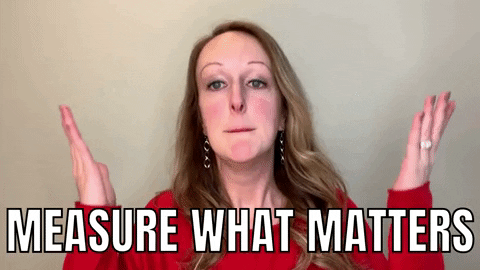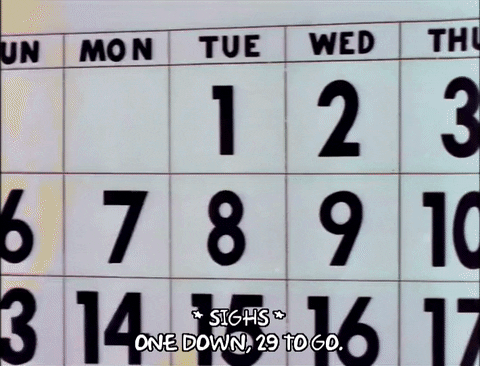How to Set SMART Fitness Goals to Finally Get Results
Our content strives to support, inform, and motivate you to meet your health goals. We want to be your trusted source of expert- and science-backed info dispensed in simple, actionable ways. Read our Editorial Guidelines.
We'd all like to believe we have smart goals. After all, we're not sitting here setting goals like, "I want to figure out which fireworks are most likely to light my eyebrows on fire." No. Our goals are way smarter, grown-up goals like, "I want to workout more and take better care of myself."
And yet, as smart as that sounds, it's not actually a SMART goal — because to be SMART, a goal has to be Specific, Measurable, Achievable, Relevant, and Time bound.
That's right — much like LOL or FOMO, SMART is an acronym. And unless your fitness goals line up with every letter in the acronym, they're not SMART fitness goals. Not yet, anyway.
Below, we'll show you how to set SMART goals and how they can help you on your fitness journey.
How to Set SMART Fitness Goals
Setting the right goals is a HUGE factor in whether or not you achieve your fitness and nutrition benchmarks. People who get real results use SMART fitness goals to hold themselves accountable and stay motivated.
Here, we'll break this acronym down one letter at a time, and show you how to use it to set yourself up for success.
Specific

We often fail to achieve our goals because the terms we use during goal setting are too broad. “Eat healthier,” “improve my fitness level,” and “lose weight” are all goals, but they're not specific — they don't offer any guidance on what "eat healthier" means or how you can achieve it.
To make them specific, be more descriptive and include numbers. (The numbers are technically part of the M for measurable, but it's hard to talk about the S without the M.)
Here are some examples of specific goals:
Decrease my soda consumption from one can each day to one can each week.
Increase my fruit and veggie consumption from two to five servings per day.
Ride my bike instead of driving to work at least three times per week.
Take the kids for 30 minutes of physical activity, like a walk or bike ride, at least five days per week.
Measurable

In order to track your progress, your goals need to be measurable. This is why we included all those numbers when we were making our goals specific.
The amount of soda you consume, servings of fruit and vegetables you eat, and minutes of exercise you complete are all measurable goals. You just have to put a number in front of them.
And while weight loss may seem like the most measurable fitness goal — weight is literally a measurement, after all — losing 10 pounds of body weight or gaining 10 pounds of muscle mass aren't the only or even necessarily the best fitness goals you can set.
Anyone who's ever tried to lose weight knows that it doesn't happen in a straight line. It's more like a scatter plot. Exercise goals may be easier to stick to and ultimately help you stay motivated. If you're having trouble setting measurable fitness goals, a Kickoff coach can help you set and reach your goals.
Here are some measurable exercise goals you can set:
Work out three days per week for 30 minutes.
Do three reps each of seven dumbbell exercises each day.
Take 3,000 steps per day.
Pro tip: Self-monitoring increases your likelihood for positive behavior change. So, keep a fitness tracker or start using a training log or journal to track your progress.
Achievable

Your goal should be meaningful and something to work towards, but it also needs to be within your capabilities. It needs to be achievable or attainable — that's two A's, so this letter must be doubly important.
Yes, goals should be challenging, but not impossible to achieve. Don’t set yourself up for failure and frustration by setting your goals too high. Choose something that allows for steady progress to keep you motivated.
When you start your SMART goal setting, be sustainable. Small changes lead to small wins that increase your fitness motivation. There's no right number of days per week to exercise, and one day is always better than none. Plus, there's now plenty of research that says even very short workouts can make a big difference.
Here are some of our favorite achievable goals for when you're just starting your fitness journey:
Do 10 minutes of really fun cardio (think hula hoop, dance party, or jump rope) three times per week.
Work out one day per week for 30 minutes.
Do 20 jumping jacks, 10 squats, and 10 push-ups three days per week.
If you're not sure what's achievable for you, work with a nutritionist or personal trainer to figure out which goals might be attainable based on your current fitness level. It’s also worth it to talk to a doctor to make sure you're healthy enough for physical activity.
Relevant

Like the A in SMART, the R in SMART can also have two interpretations: relevant or realistic. It's a flex letter, kind of like those muscles you'll be flexing after your SMART fitness goals pay off.
“Relevant” can be a simple reminder to stay on track. If you're setting fitness goals, then something like "Save the dinosaurs" isn't very relevant. And if you haven't worked out in a couple years, then something like "Do the Ironman Triathlon" doesn’t relate to you. (Coincidentally, these goals also aren't realistic.)
Think about your limitations, such as your current physical condition, including health concerns and injuries, and then consider the resources available to you.
When considering your resources, go beyond money and gym equipment. Time is also a resource. If you often struggle to find 10 minutes of spare time each day, then "work out for 30 minutes" is not a realistic goal.
Here are some relevant and realistic goals that will help you see progress and improve your overall wellbeing:
Take 500 more steps per day.
Jog for two minutes during my 20-minute walk.
Stretch for 10 minutes each morning.
Once you're consistently achieving smaller goals, larger goals will start to become more relevant to you, and you'll be able to set new, more challenging exercise goals.
Time Bound

Set a time frame for your goal that includes a start date and an end point. It's okay to have long-term goals, like run a marathon or lose 10 pounds in 10 weeks, but within this time frame, remember to set up a series of short-term goals that give you opportunities to track your success and stay motivated.
For example, if your long-term goal is to lose 10 pounds in the next 10 weeks, you can have a weekly goal of losing one pound per week. If you want to run a marathon in a year, your goal might be to run half a mile next week and build your way up from there.
Here are some examples of time bound goals:
Walk one mile per day each day for one month.
Add three more servings of vegetables to my diet in three months (by adding one serving per month).
Be able to hold a plank for one minute by my next birthday.
At the end of your time frame, you can revisit your goal and decide if you want to increase it. For example, if you've walked one mile per day for a month, you might want to start walking a mile and a half or start jogging for part of your mile.
And if you've achieved what you set out to achieve, you can check that goal off your to-do list and set a completely different SMART fitness goal in the future.
Go for SMART fitness goals

SMART stands for Specific, Measurable, Achievable, Relevant, and Time bound. It’s not complicated, but it’s often hard to remember to frame our fitness goals in this way.
Having the discipline to make sure that any goal you set for yourself uses this framework is half the battle. The other half often involves a lot of sweat, but we’ll talk about that another time.
If you need help setting SMART goals or need an accountability partner to make sure you stick to them, tell us about your goals, and we’ll set you up for free consultation with an expert personal trainer. Get your fitness goals on track today!